Seed Heads for Winter Interest
Seed heads are an easy way to add interest in the garden in winter. As plants fade and die off for the winter and the garden starts to look a bit scruffy, I find it really tempting to cut plants back and leave the beds all neat and tidy. But there are several advantages to keeping those secateurs hidden away and allowing stems and seeds heads to stay in place over the autumn and winter months.
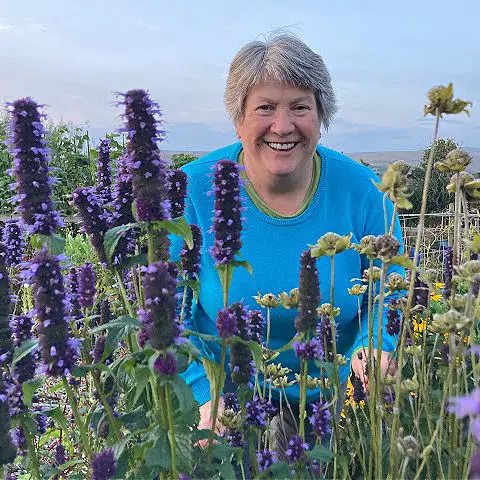
They can provide structural interest, their stems and seed heads providing punctuation and drama in an otherwise still and often bland landscape. Some stems provide refuge for overwintering insects, so waiting until spring before cutting them back to the ground supports biodiversity in your garden. And seed heads can provide food for wildlife.
I love to watch birds land on stems and peck at the seeds as the stems sway from their weight and the breeze. Without a doubt, different seed heads are visited by different birds, so it is worth having a range on offer for them. We are fortunate to have plenty of space, so I leave a patch of dock leaves that have gone to seed because the local sparrow and dunnock populations visit them to feed.
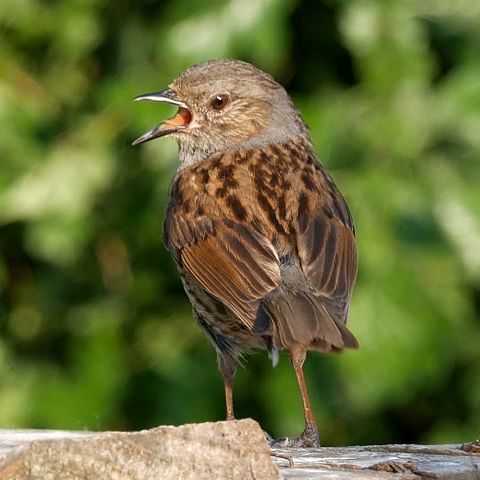
I often cut back leaves of many clump-forming plants, like Alchemilla mollis, and place the dead foliage around the plants as a mulch and to break down in situ over the winter months. If the plant is slightly more tender, I may use it as a mulch over the plant to help protect it from frost.
Here are my suggestions of a few plants that offer winter drama with their shapely seed heads.
Cynara cardunculus
Cardoon makes a big statement in the garden with huge silver leaves above which large flower buds appear, up to 2.5m high. The flowers are bright purple and much loved by bees and other flying insects.
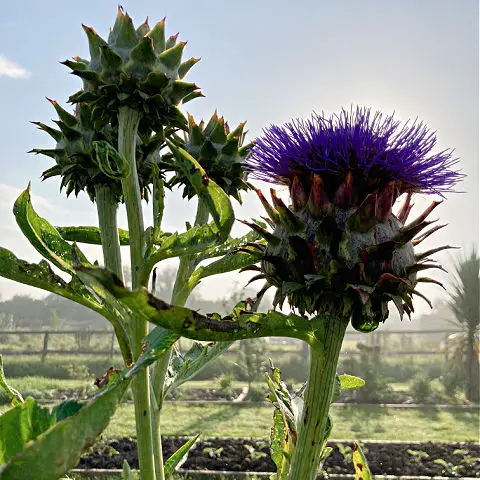
The seed heads will remain on the plant until rain and wind and feeding birds break them apart. They offer a dramatic statement in the winter garden, with towering seed heads that provide vertical interest and a spiky-looking silhouette.
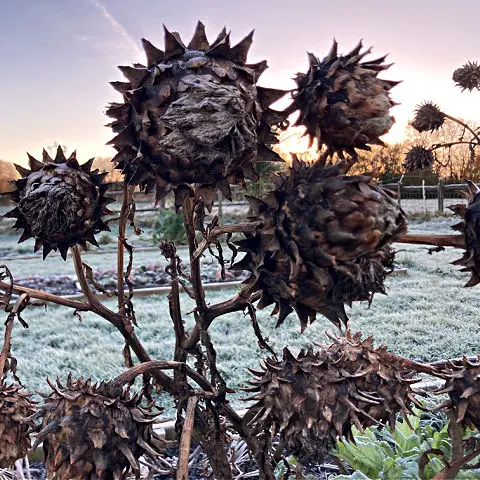
The recent storms have flattened our cardoons so the stems now lie horizontally on the ground. But we leave them where they have fallen to continue to provide seeds for wildlife.
Agastache
Whichever colour Agastache you grow, the seed heads can be left on the stems to provide stiff, upright accents in your garden borders. Flowers continue to open into mid-autumn on plants that reach 1m tall and 50cm spread. They are easy to grow from seeds in spring or autumn.
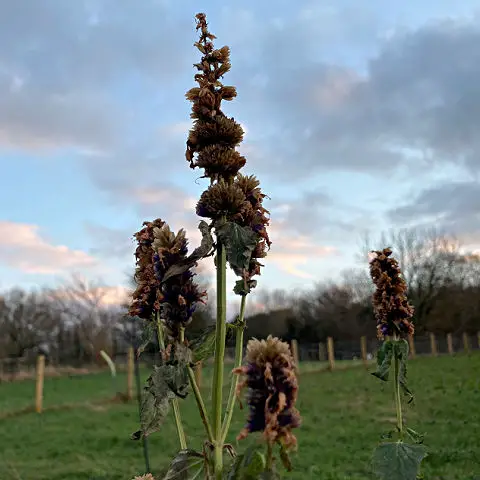
Bronze Fennel
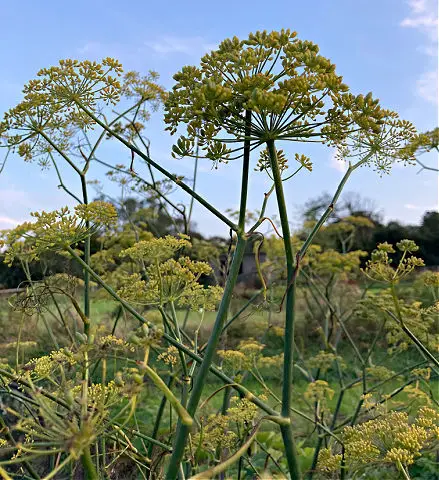
Herb fennel is a perennial herb that not only provides masses of aniseed tasting leaves, but adds height and colour to the border. The yellow flowers appear in mid to late summer. The seed heads will stay on the plant well into the winter.
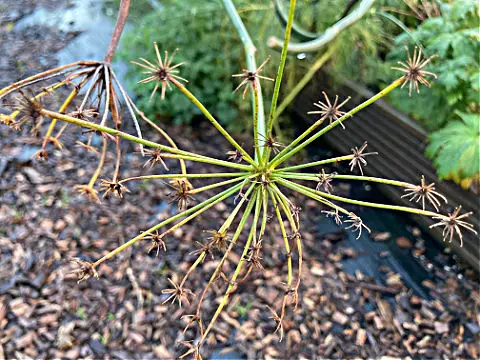
Once the seeds have dispersed the umbrella-like structures remain, providing tiny stars on the end, which can look very attractive. Herb fennel is easy to grow from seed and will self-seed readily. Keep watch for seedlings in spring and transplant to a suitable space in your garden. Alternatively, pot up to donate or swap.
Echinacea, Rudbeckia and Echinops
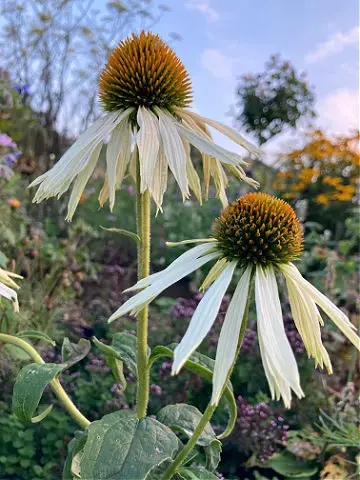
Among many herbaceous perennials that provide interest during the winter months, Echinacea, Echinops and Rudbeckia all have seed heads that you’d be forgiven for thinking are a clump of lollipops on long sticks. The length of time they retain their shape is dependent on the weather and the local growing conditions. Try Echinacea ‘Primadonna White’, Echinops ritro subsp. ruthenicus or Rudbeckia fulgida var. sullivantii ‘Goldsturm’.
Cortaderia selloana ‘Monstrosa’
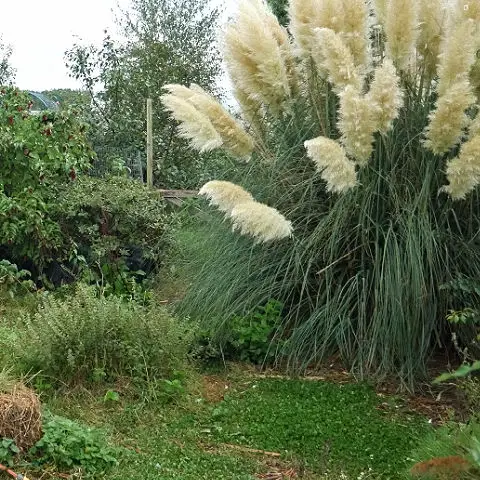
I think pampas grass has had a rough press over the decades. They can be thugs, particularly if they aren’t given sufficient space at planting time. And they can be hard to dig up once established. I also find them quite unfriendly if there are small children using the garden. The long arching leaves may be great for hiding in or behind, but the sharp edges of the leaves mean that they can easily cut us.
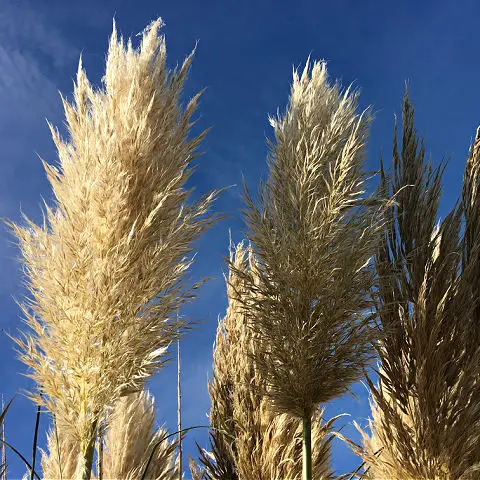
Despite those potential issues, I think they are graceful plants that offer visual interest throughout the winter and early spring. And plenty of seeds for wild birds visiting the garden. From bullfinches to sparrows, I’ve watched as birds return time and again to feast on the seeds. And sparrows strip the seedheads in spring to create nests with the soft material.
Ornamental grasses
There is a wide range of ornamental grasses available for the garden and most of them look good throughout winter. I think grasses look best when being blown around by the wind, so you can see the movement. Or when they are covered in frost, giving them a sparkling coating that highlights their shape and form.
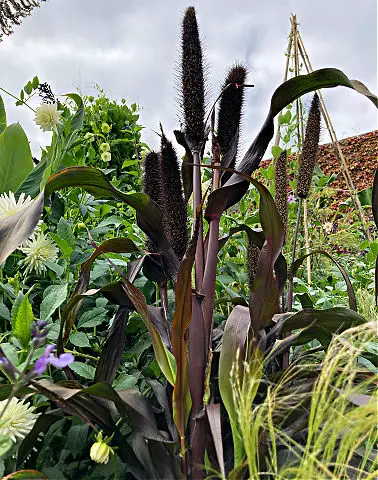
Try feathered reed grass, Calamagrostis × acutiflora, height to 2m,. And for nearer the front of the border, try Pennisetum ‘Purple Majesty’. It’s an annual ornamental millet which grows to 1m – 1.5m. Last year, our plants didn’t make it all through the winter as the birds found the seed heads to feed on.
Phlomis russeliana
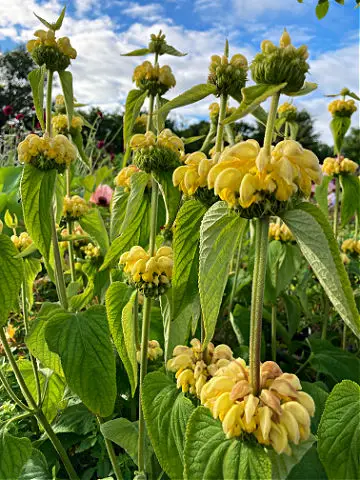
The spreading herbaceous perennial provides interest year-round. In spring the young green foliage appears on stems that rise to about 100cm. Above each pair of leaves a rosette or whorl of yellow flowers appear in late spring and early summer. It can spread quite rapidly.

I find there is something jolly, almost comical in the look of the seed heads that appear to cling to the stems. (Perhaps that says more about me as a gardener than the plant!)
Papaver somniferum
Opium poppies are easy to grow annuals that produce single, semi-double or fully double flowers that are available in a wide range of colours. They self-seed readily.
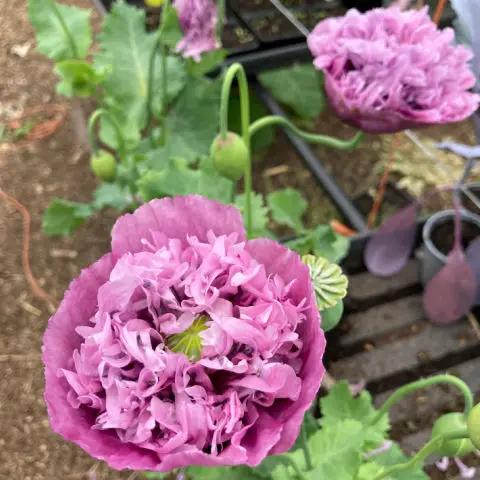
This beautiful double, mauve poppy grew at my parents’ home over ten years ago. I collected some seeds and have been growing in my garden ever since. Collect seeds by shaking the pods once they have opened.
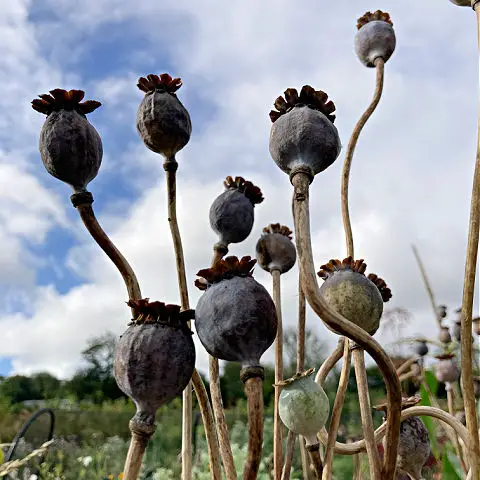
I often remove a couple of seed heads to scatter the seeds elsewhere in the garden. And then leave the rest to have a display throughout the cooler months. It is worth noting that all parts of this poppy are poisonous except for the fully ripe seeds.
Lunaria
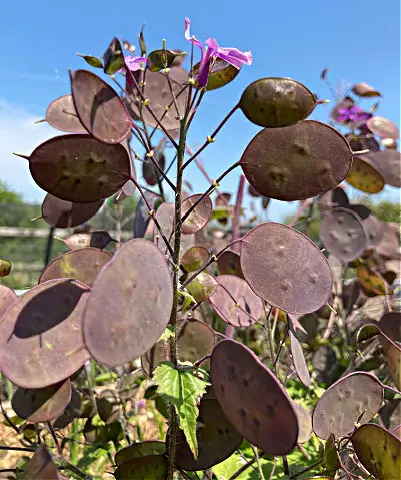
Honesty is one of those plants that most people remember by its silver disc-shaped seed pods rather than the purple or white flowers that appear in spring. Once dried the outer layers can be peeled away. If left to nature they drop off, to reveal the seeds held on a silvery, translucent membrane. The stems of seed pods make a great addition to dried flower arrangements. They are hardy annual or biennial plants that grow to 50cm -100cm tall and 50cm spread. I find that they do not last throughout the whole winter, succumbing to the weather by late autumn, but are still very worth growing.
Add an edible
Globe artichoke (Cynara scolymus) looks similar to Cardoon, but it is the flower bud that is harvested for the table. They usually grow to 1.5m height and 1m spread. The flowers attract bees and other pollinators to the garden and the seed heads provide food for wild birds.
Thifty tip
As seeds ripen, save a few seeds of each plant, in individual paper envelopes, to plant in spring. Don’t forget to label them! Even if you don’t want more of a particular plant, you can offer the seeds to a local seed swap.
More information
The article ‘Less work, more seeds heads’ was written for Amateur Gardening magazine in autumn 2024. I have updated some of the specific varieties and images. Links are included to help you find the suggested plants that have seed heads for winter garden interest.
- Ball Shaped Flowers - October 24, 2025
- 10 Shrubs for Summer Colour - October 10, 2025
- Contrasting flower colours - September 26, 2025

Beautiful and inspiring, Thank you Liz !
I am enjoying writing these gardening articles so much. It’s a pleasure to remind myself how wonderful the natural world is all around us, and at all times of the year!